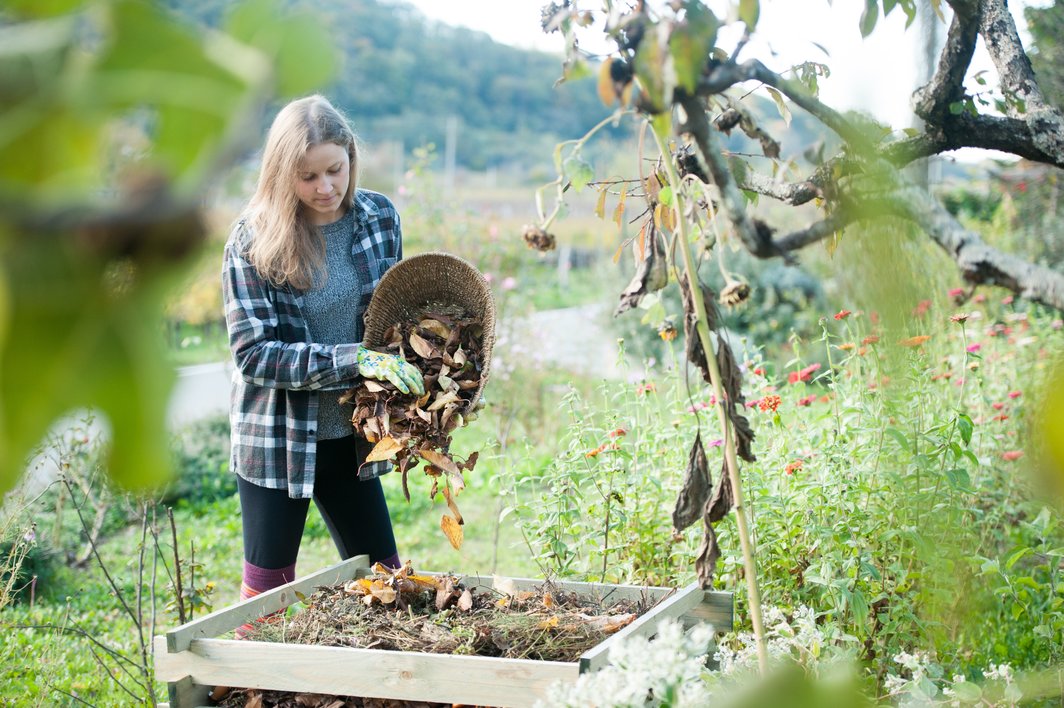A Beginner's Guide to Composting at Home
A Beginner's Guide to Composting at Home
If you take a casual glance at your garbage cans, you might be shocked at the amount of waste being produced at your home. Between discarded food and yard clippings, the trash almost overflows with waste. However, many of these items are still useful. Banana peels, egg shells and grass clippings can all be used as compost. Spruce up your home and help the environment by learning how to compost at home. There are almost no drawbacks to this self-sufficient process.
Getting Started
Begin by selecting a good location for the compost. The pile or compost bin should be located near a water source but not close to your neighbor's property. Make sure that your chosen area has good drainage too. You want any moisture to drain away from the pile as necessary.
Build your pile by supporting it with one of these selections:
- Makeshift fence from mesh wire or aluminum products
- Compost bin
- Compost tumbler
How To Stack the Pile
Don't worry about how to make a compost pile, because the strategy is relatively simple. The general rule calls for one part of green materials to two parts of brown materials. Here are a few examples of both types of materials:
Green
- Fresh grass clippings
- Hair
- Produce peels
Brown
- Dried-up leaves
- Wood chips
- Laundry dryer lint
Stack the green and brown materials in separate layers within your pile. Gently sprinkle water on each layer to start the composting process. Turn or toss the materials on a periodic basis to accelerate the composting action.
Considering Worms and Kitchen Scraps
Most people don't think much about the basic worm. They're just considered benign soil dwellers. However, this organism plays a crucial part in your composting success. Worm composting is particularly helpful because there's more than just a chemical reaction occurring between the green and brown materials.
Worms digest the materials and produce excrement that's perfect for soil creation. The best way to help these critters is by adding kitchen scraps and worms to the middle of your compost pile. The worms feast on the scraps while remaining hidden from any curious animals in the yard.
Major Benefits
There are countless benefits to composting:
- Reducing your household waste out the door
- Improving your property's soil conditions
- Reducing the need for fertilizers
- Encouraging healthy fungi and bacteria growth to fight off plant diseases
You're also helping the planet by putting fewer items in the landfills. This benefit alone is motivation enough to start a pile today.
How To Improve Your Setup
Turning your compost pile with a pitchfork is a valid way to keep up with the decomposition process. However, you can make the turning a mess-free experience with a compost bin that rotates . Turn the bin with an attached lever, and you'll have perfectly mixed compost in no time.
To learn more about how to start composting, pick up one of our books on the subject, such as “The Complete Compost Gardening Guide ,” “Let it Rot! ” and “Easy Composters You Can Build .” They discuss options for DIY compost bins and all of the science and fine details about composting, which are especially helpful if you're facing some challenges. Read up on the subject as much as you can. This, combined with working through the process yourself, will help you become an expert on the subject. Plus, composting through the years will only improve your property and your garden and help Earth at the same time.

